March 2019
March 21, 2019
Underwear Trading Cards
An idea recently introduced by Hanes, which is putting trading cards featuring Michael Jordan modeling underwear into packs of their men's underwear. From the press release:If there's a total of 170 different cards, how much underwear would you need to buy to get them all?
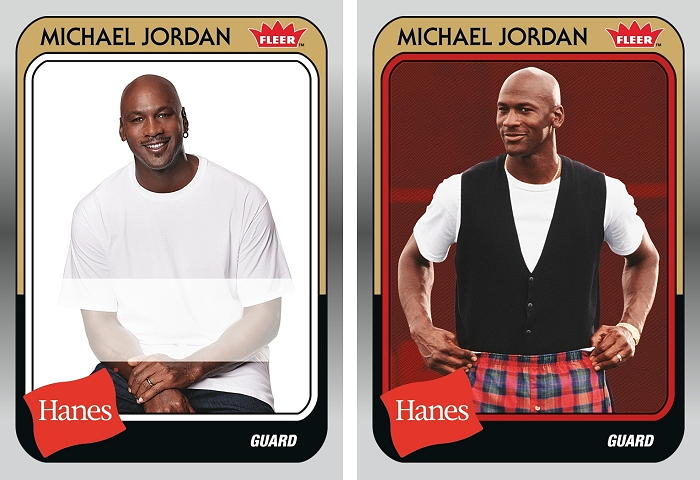
Posted By: Alex - Thu Mar 21, 2019 -
Comments (0)
Category: Collectors, Underwear
The Acrobatic Fly
Posted By: Paul - Thu Mar 21, 2019 -
Comments (3)
Category: Entertainment, Nature, Twentieth Century
March 20, 2019
Stedman Whitwell’s Rational System of Nomenclature
Back in the 19th century, English architect Stedman Whitwell decided that there must be a way to name cities and towns that could not only provide a unique name but also convey geographic information. His idea, as described by George Browning Lockwood in The New Harmony Communities (1902):
The first part of the town name expressed the latitude, the second the longitude, by a substitution of letters for figures according to the above table. The letter “S” inserted in the latitude name denoted that it was south latitude, its absence that it was north, while “V” indicated west longitude, its absence east longitude.
Extensive rules for pronunciation and for overcoming various difficulties were given. According to this system, Feiba Peveli indicated 38.11 N., 81.53 W. Macluria, 38.12 N., 87.52 W., was to be called Ipad Evenle; New Harmony, 38.11 N., 87.55 W., Ipba Veinul; New Yellow Springs, Green county, Ohio, the location of an Owenite community, 39.48 N., 83.52 W., Irap Evifle; Valley Forge, near Philadelphia, where there was another branch community, 40.7 N., 75.25 W., Outeon Eveldo; Orbiston, 55.34 N., 4.3 W., Uhi Ovouti; New York, Otke Notive; Pittsburg, Otfu Veitoup; Washington, Feili Neivul; London, Lafa Vovutu.
The principal argument in favor of the new system presented by the author was that the name of a neighboring Indian chief, “Occoneocoglecococachecachecodungo,” was even worse than some of the effects produced by this “rational system” of nomenclature.
I think the chart above is slightly misleading, as it implies that the top line is for latitude and the bottom for longitude. But if you look at the names Whitwell was coming up with, it's clear that this wasn't the case. It seems, instead, that one had to choose whether to start the name with a vowel (top line) or consonant (bottom line).
If I've understood his system correctly, then the 'rational' name for San Diego (32.71 N, 117.16 W) could be Fena Baveeby. And Los Angeles (34.05 N, 118.24 W) could be Fotu Avapek.
Posted By: Alex - Wed Mar 20, 2019 -
Comments (4)
Category: Geography and Maps, Odd Names, Nineteenth Century
Mystery Illustration 81
Who is this famous film star?The answer is here.
And after the jump.
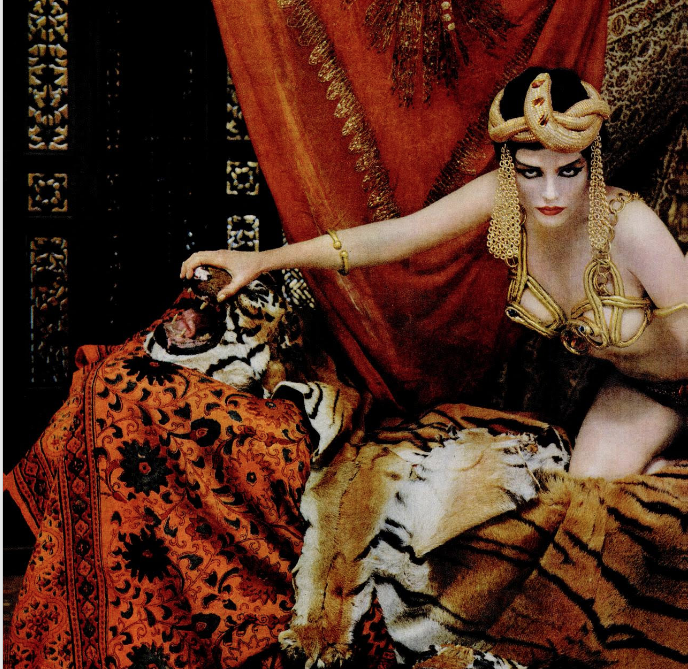
More in extended >>
Posted By: Paul - Wed Mar 20, 2019 -
Comments (1)
Category: Movies, Twentieth Century
March 19, 2019
Workplace Accidents
Horrifying ways that people can get maimed at work, courtesy of Canada's Workplace Safety and Insurance Board's Prevent-It Campaign.Warning: some gruesome content!
Posted By: Alex - Tue Mar 19, 2019 -
Comments (1)
Category: Accidents, Movies, Work and Vocational Training
How We Do Things in Kansas
I love this genre of postcards that feature oversized common things like fish and various crops. This is one I had not seen before.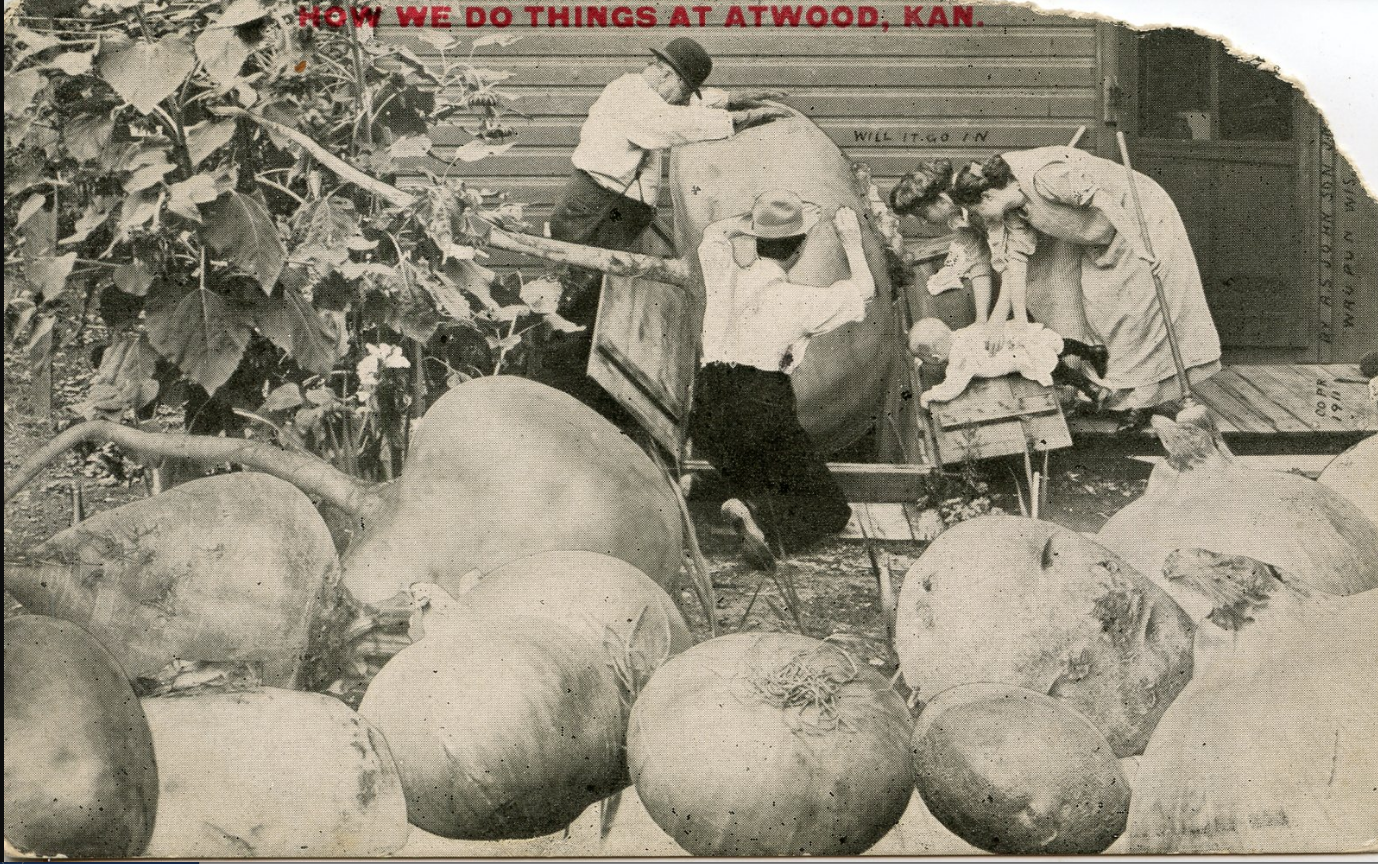
Source.
Posted By: Paul - Tue Mar 19, 2019 -
Comments (1)
Category: Agriculture, Enlargements, Miniatures, and Other Matters of Scale, Excess, Overkill, Hyperbole and Too Much Is Not Enough, Horticulture and Gardens, Humor, Regionalism, Surrealism, Twentieth Century, Postal Services
March 18, 2019
The Seat That Burns
Concerned by an increasing number of attacks on cab drivers, Parisian taxi drivers in 1987 began outfitting their cars with a device called "le siege qui brule" ('the seat that burns'), which could electrify unruly passengers with 52,000 volts.As far as I can tell, the devices were outlawed a few months after their introduction.


Hazleton Standard-Speaker - Oct 23, 1987
Posted By: Alex - Mon Mar 18, 2019 -
Comments (3)
Category: Crime, Motor Vehicles, 1980s
The Great Toy Robbery
The Great Toy Robbery, Jeff Hale, provided by the National Film Board of Canada
Posted By: Paul - Mon Mar 18, 2019 -
Comments (1)
Category: Crime, Holidays, Cartoons, 1960s
March 17, 2019
Common courtesy to light a match
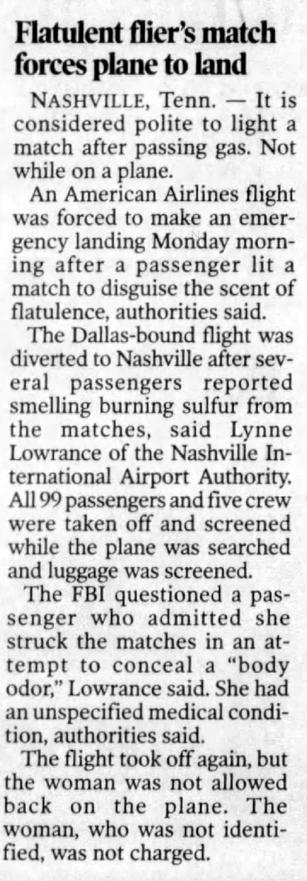
Springfield News-Leader - Dec 6, 2006
Posted By: Alex - Sun Mar 17, 2019 -
Comments (3)
Category: Flatulence, Air Travel and Airlines, 2000s
Happy St. Patrick’s Day 2019
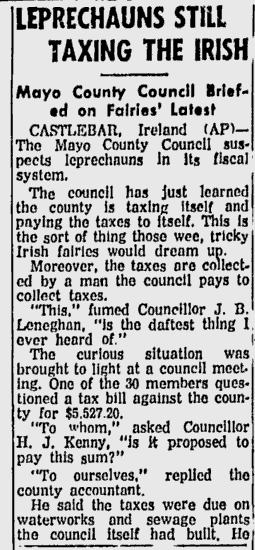
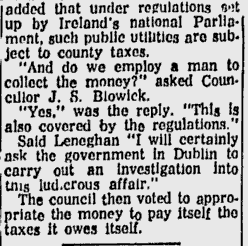
Source.
Posted By: Paul - Sun Mar 17, 2019 -
Comments (0)
Category: Government, Foreign Customs, 1960s, Europe, Fictional Monsters
| Get WU Posts by Email | |
|---|---|

| Who We Are |
|---|
| Alex Boese Alex is the creator and curator of the Museum of Hoaxes. He's also the author of various weird, non-fiction books such as Elephants on Acid. Paul Di Filippo Paul has been paid to put weird ideas into fictional form for over thirty years, in his career as a noted science fiction writer. He has recently begun blogging on many curious topics with three fellow writers at The Inferior 4+1. Chuck Shepherd Chuck is the purveyor of News of the Weird, the syndicated column which for decades has set the gold-standard for reporting on oddities and the bizarre. Our banner was drawn by the legendary underground cartoonist Rick Altergott. Contact Us |

